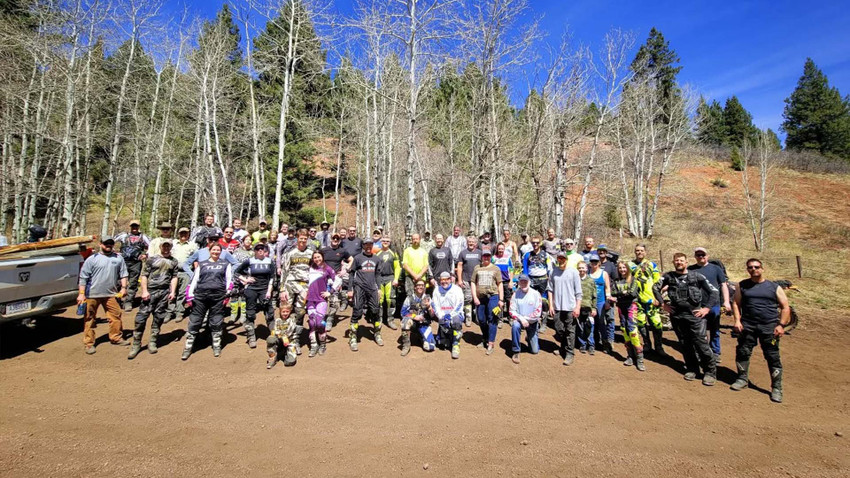Colorado’s Rampart Range Motorized Management Committee depends on Silky to keep OHV trails clear
Located in the Pike-San Isabel National Forest about 35 miles southwest of Denver, the Rampart Range Motorized Recreation Area features 200 miles of trails for OHVs, or Off Highway Vehicles, including dirt bikes and ATVs. The 30 designated trails in the range are historic. Some started as stagecoach roads. Others were game trails. Now, they provide a zone close to Denver and Colorado Springs that traverses several hundred square miles of National Forest at elevations ranging from about 6,500 feet to over 8,500 feet with terrain and challenges suitable for riders of all abilities.
In cooperation with the South Platte Ranger District of the USDA Forest Service, Rampart Range Motorized Management Committee (RRMMC) maintains the trail system.
“We’re all volunteers,” says Leah Hendricks, who manages the group’s website and social accounts and chairs the trail maintenance subcommittee. “Almost all 50 of us on the committee carry Silky saws, and most of us carry Silkys whenever we ride.”
Hendricks says they have all used other saws, but Silky is the best. The RRMMC has several different Silky Saws, but Hendricks’ favorite is the Silky BigBoy.
RRMMC was founded in 1972, but bikers have been riding the Ramparts since the mid-1940s. When Japanese trail bikes made it stateside in the late 1960s, the area grew in popularity. A significant part of the early plan involved the mapping, marking, and maintenance of trails, and where necessary, the rerouting of trails.
“The soil in the Ramparts is mostly decomposed granite, which is great for riding but makes it hard for trees to hold on when the ground gets soggy from snowmelt in the spring and the wind starts blowing,” says Hendricks.
For RRMMC, maintaining the trails keeps the riding fun. It also prevents resource damage. “When people go off the trails to avoid an obstacle, that can cause erosion, which puts the trails in jeopardy of being closed,” says Hendricks. “So we get out there and clear them.”
When it comes to Silky saws, Hendricks says that the Committee encourages all trail riders to carry a Silky. “You never know when you’ll be out on your bike and the trail will be blocked with a downed tree,” says Hendricks. “Silkys are light, they’re safe, and anyone can use one. As far as I am concerned, a Silky saw is critical safety gear for any ride.”

